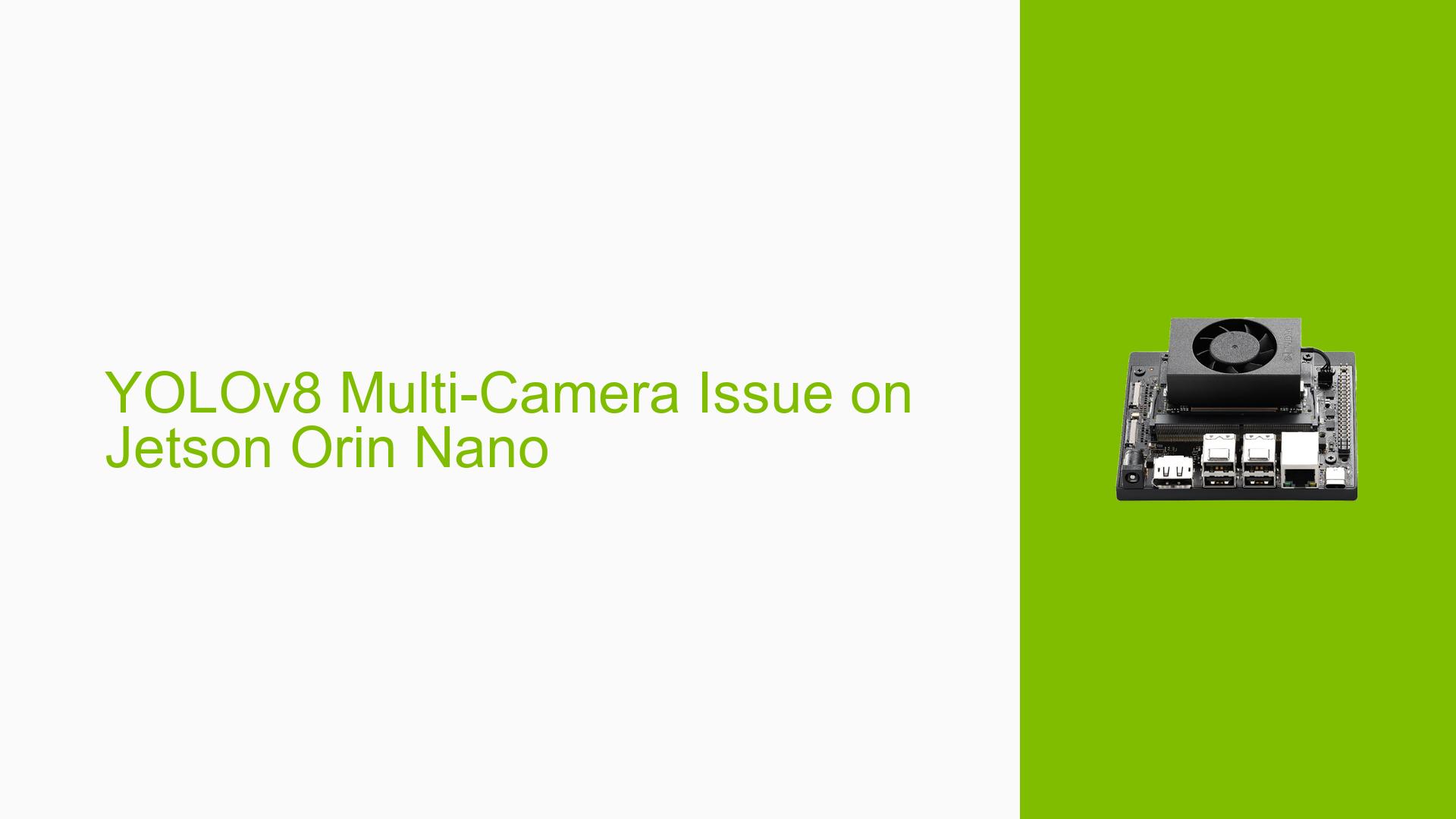YOLOv8 Multi-Camera Issue on Jetson Orin Nano
Issue Overview
Users are experiencing difficulties when attempting to run two Python scripts simultaneously on a Jetson Orin Nano. One script utilizes a YOLOv8-trained PyTorch model with an Intel RealSense D455 camera, while the other uses a standard webcam. The device hangs, only accessing the Intel RealSense camera and failing to operate both cameras simultaneously. Interestingly, when using the SSD MobileNet pretrained model (COCO model) from Jetson Inference, both cameras can be accessed successfully.
Possible Causes
-
Memory Limitations: The system may be running out of memory, causing it to freeze. This is a common issue when running multiple resource-intensive processes simultaneously.
-
Resource Allocation: The YOLOv8 model might be consuming more resources than the SSD MobileNet model, leaving insufficient resources for the second camera.
-
Driver Conflicts: There could be conflicts between the drivers for the Intel RealSense camera and the standard webcam.
-
Software Incompatibility: The PyTorch implementation of YOLOv8 might not be optimized for the Jetson Orin Nano’s architecture, unlike the Jetson Inference framework.
-
Camera Access Method: The method used to access the cameras in the YOLOv8 scripts might be less efficient than the one used in the Jetson Inference example.
Troubleshooting Steps, Solutions & Fixes
-
Monitor System Resources:
Use thetegrastatscommand to check memory usage while running the scripts. This will help identify if memory exhaustion is the root cause.tegrastats -
Optimize YOLOv8 Model:
Consider optimizing the YOLOv8 model for the Jetson platform. This may involve quantization or pruning to reduce memory usage and improve performance. -
Use Jetson Inference Framework:
Since the SSD MobileNet model from Jetson Inference works with both cameras, consider integrating your custom PyTorch model with this framework. Follow the tutorial provided in the forum discussion:from jetson_inference import detectNet from jetson_utils import videoSource, videoOutput net = detectNet("ssd-mobilenet-v2", threshold=0.5) camera1 = videoSource("csi://0") # For the first camera camera2 = videoSource("/dev/video0") # For the second camera display = videoOutput("display://0") while display.IsStreaming(): # Process frames from both cameras img1 = camera1.Capture() img2 = camera2.Capture() # Perform detection on both images detections1 = net.Detect(img1) detections2 = net.Detect(img2) # Display or further process the results -
Update Drivers and Software:
Ensure that all drivers, especially for the Intel RealSense camera and the standard webcam, are up to date. Also, update the Jetson software stack to the latest version. -
Reduce Model Complexity:
If memory is the issue, consider using a smaller or less complex model. YOLOv8 has different variants (nano, small, medium, large). Try using a smaller variant to reduce resource usage. -
Implement Resource Management:
Use Python’smultiprocessingorthreadingmodules to better manage resources between the two camera processes. This can help in allocating resources more efficiently. -
Check Camera Compatibility:
Verify that both cameras are fully compatible with the Jetson Orin Nano. Consult the Nvidia Jetson compatibility list and ensure you’re using the correct APIs for each camera. -
Profiling and Optimization:
Use profiling tools to identify bottlenecks in your Python scripts. Tools likecProfilecan help pinpoint which parts of your code are consuming the most resources. -
Consider Hardware Upgrade:
If all else fails and you determine that the Jetson Orin Nano doesn’t have sufficient resources for your use case, consider upgrading to a more powerful Jetson device. -
Seek Community Support:
If the issue persists, consider posting detailed logs, error messages, and your code snippets on the Nvidia Developer Forums or relevant GitHub repositories for more specific assistance.
